
It's impossible to imagine life without a computer nowadays. From work to entertainment, these machines have become an integral part of our daily lives. But did you know there are various types of computers, each designed for specific tasks and purposes?
While the term "computer" can apply to virtually any device that has a microprocessor, most people envision a device that receives input through a mouse or keyboard, processes it and displays the result on a screen. The hardware and software within computers have evolved at a circuit-snapping pace in the past few decades — the bulky, desk-crushing machines from the early '80s look nothing like the featherweight touchscreen tablets or laptop computers of today.
Advertisem*nt
Modern computers are not just faster; they're more interconnected, thanks to the internet and various web technologies. The days of dial-up modems and text-based systems are long gone. Today, computers use WiFi and broadband connections to deliver everything from live news streams to high-definition movies and intricate video games.
There are a lot of terms used to describe different types computers. Most of these words imply the size, expected use or capability of the computer. Let's get started with the most obvious one.
Contents
- The All-Powerful Personal Computer
- Desktop
- Laptop
- Netbooks and Tablets
- Handheld Computers
- Workstation
- Server
- Mainframe
- Supercomputer
- Wearable
10. The All-Powerful Personal Computer
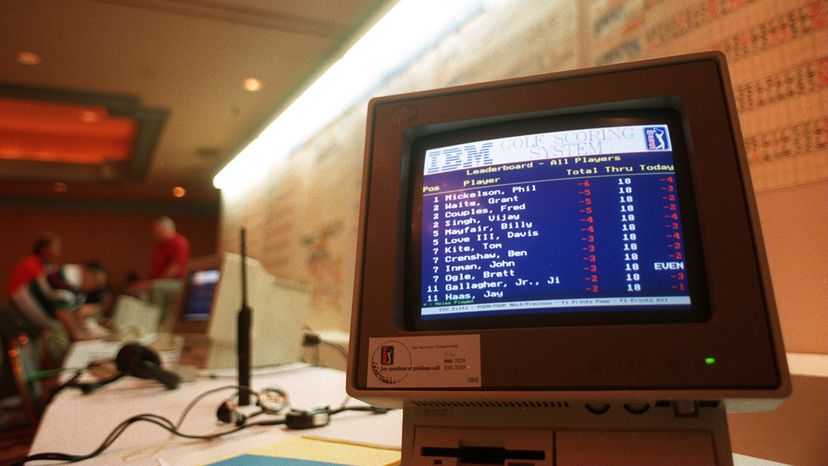
The term "personal computer" (PC) describes a computer designed specifically for individual use. While Apple's iMac falls under the category of a PC, most associate the term with computers that run on the Windows operating system. These PCs, initially dubbed as microcomputers, were a compact version of the massive computer systems that businesses employed.
In 1981, iconic tech maker IBM unveiled its first PC, which relied on Microsoft's now-legendary operating system — MS-DOS (Microsoft Disk Operating System). Not to be left behind, Apple, in 1983, introduced the Lisa, marking one of the first instances of a PC equipped with a graphical user interface (GUI) [sources: Alfred, Cabell]. This meant that for the first time, users could interact with on-screen icons rather than a bland text interface.
Advertisem*nt
Over the years, advancements in hardware components like the central processing unit (CPU) and random access memory (RAM) have skyrocketed. These leaps in technology allowed for an exponential increase in computing power. For instance, in 1986, Compaq introduced a 32-bit CPU in its 386 machines, and in 1993, Intel unveiled its first Pentium processor [sources: PCWorld, Tom's Hardware].
Modern personal computers have evolved to include touchscreens, a myriad of built-in connectivity options like Bluetooth and WiFi, and ever-evolving operating systems. The physical form of these machines, from desktop computers to portable laptops, has also seen significant transformations. Today, PCs are more than just tools for data processing or playing games; they're integral to countless aspects of daily life, from scientific research to weather forecasting.
9. Desktop
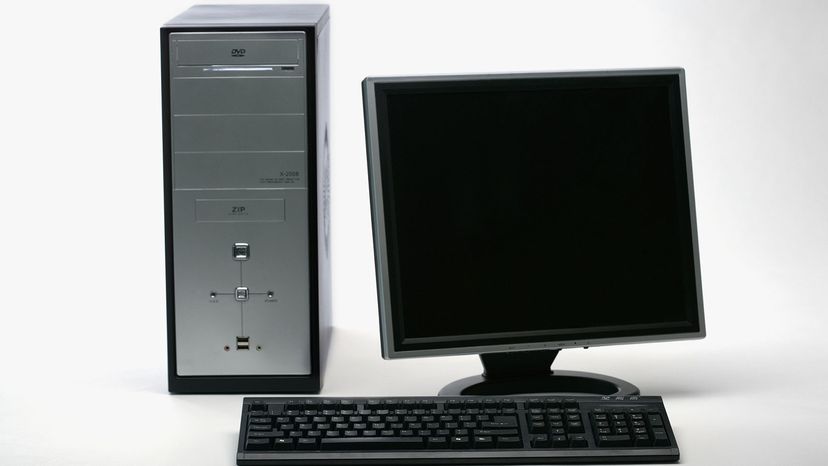
Until the middle of the 1980s, consumers had one choice for a PC — and it was the desktop format. These knee-knocking boxes (called "towers") were big enough to gouge your shins. Equipped with large CRT (cathode ray tube) monitors, they crowded your home workspace or the office. The expectation with desktop systems were that you would set the computer up in a permanent location.
Most desktops initially offered more power, storage and versatility for less cost than their portable brethren, which was what made them the go-to computer in the 1990s, when laptops were still thousands of dollars [source: Britannica].
Advertisem*nt
These days, desktops are much, much cheaper than they were 20 years, and you can have one for just a few hundred dollars. That's a far cry from the thousands of dollars they cost in the '80s. In fact, one of Hewlett-Packard's first business PCs, the 300, cost $95,000 in 1972 [source: Comen].
As smartphones and laptops continue their domination of the world, and their prices have put them in reach of most consumers, desktops are going the way of the dinosaur. In 2017, worldwide desktop sales dropped below 100 million, far fewer than the 161.6 million laptops that flew off shelves that same year [source: Moore-Colyer].
But don't cry for the desktop. This PC format is giving way to products that are just as powerful, with the tremendous added benefit of portability. And hardcore gamers still value desktops.
8. Laptop

Once upon a time, if you wanted to use a PC, you had to use a desktop. Engineers simply couldn't condense the sophisticated systems in a PC into a portable box. In the mid-1980s, though, many big computer manufacturers made a push to popularize laptop computers.
Laptops are portable computers that integrate the display, keyboard, a pointing device or trackball, processor, memory and hard drive all in a battery-operated package slightly larger than an average hardcover book.
Advertisem*nt
The first true commercial laptop, though, was a far cry from the svelte devices crowding retail shops today. The Osborne 1, released in 1981, sold for around $1,800, had 64 kb of memory — and weighed about 24 pounds (10 kilograms). As it toned your biceps, the Osborne 1 also gave your eyes a workout, as the screen was just 5 inches (12 centimeters) [source: Computing History].
Fortunately, manufacturers quickly improved upon the look and feel of laptops. Just two years later, Radio Shack's TRS-80 Model 100 packed its component into a 4-pound (8 kilogram) frame, but it lacked power.
By the end of the decade, NEC's UltraLite smashed barriers by cramming real computing efficiency into the first true notebook (i.e. very light laptop) style, which weighed just 5 pounds (2.2 kilograms). The race to ultra-portability was officially on [source: Bellis]. However, laptops didn't overtake PCs in sales until 2005 [source: Arthur].
7. Netbooks and Tablets
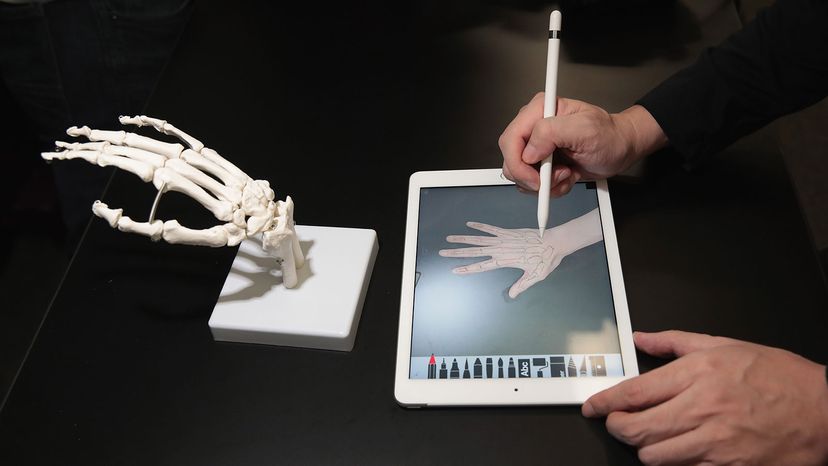
Netbooks are ultra-portable computers that are even smaller than traditional laptops. The extreme cost-effectiveness of netbooks (roughly $200) means they're cheaper than almost any brand-new laptop you'll find at retail outlets. However, netbooks' internal components are less powerful than those in regular laptops [source: Krynin].
Netbooks first appeared in 2007, primarily as a means for accessing the internet and web-based applications, from email, to music and movie streaming, to web surfing. They're incredibly compact, but as a result, their specifications list often resembles a very stripped-down laptop. They have small displays (as small as 6-7 inches or 15-18 centimeters), little storage capacity (perhaps maxing out at 64GB), and sometimes skimp on or altogether skip data ports (like USB or HDMI) that traditional laptops wield. A lot of netbooks come from small manufacturers, as the big guns can't be bothered with the low profit margins of these cheaper machines [source: Lenovo].
Advertisem*nt
Because they have relatively sluggish processors and little memory, netbooks can't do the heavy lifting for graphics applications or hardcore games. Instead, they're best for the task that gives them their name: web surfing [source: Krynin].
Tablets have largely replaced the niche netbooks occupied. Tablets are thin, flat devices that look like larger versions of smartphones. They were first manufactured in 2000 by Lenovo, but popularized by Apple in 2010 with the release of its iPad [source: Bort].
Tablets can do pretty much all the functions that laptops do, but don't have the internal fans that PCs have. So they have to rely on lower-performing processors that won't use as much heat or battery power. They also have less storage capacity than traditional PCs. Older tablets used the same operating systems as mobile phones but the newer tablets use a full operating system such as Micrsoft Windows 10 [source: Lenovo].
Tablets are more portable than PCs, have a longer battery life yet can also do smartphone-like activities such as taking photos, playing games and drawing with a stylus. For those who like the keyboard functionality of a laptop, some tablets come with a keyboard (attached or detachable), allowing you to combine the best of both worlds.
6. Handheld Computers

Early computers of the 20th century famously required entire rooms. These days, you can carry much more processing power right in your pants pocket. Handheld computers like smartphones and PDAs are one of our era's iconic devices [source: Arthur].
Debuting in the 1990s, personal digital assistants (PDAs) were tightly integrated computers that often used flash memory instead of a hard drive for storage. These computers usually didn't have keyboards but relied on touchscreen technology for user input. PDAs were typically smaller than a paperback novel, very lightweight with a reasonable battery life. For a time, they were the go-to devices for calendars, email and simple messaging functions [source: Britannica]. Remember the Palm Pilot and the BlackBerry?
Advertisem*nt
But as the smartphone revolution began, PDAs lost their luster. Smartphones like the iPhone and Samsung Galaxy blend calling features and PDA functionality along with full-blown computer capabilities that get more jaw-dropping by the day. They feature touch-screen interfaces, high-speed processors, many gigabytes of memory, complete connectivity options (including Bluetooth, WiFi and more), dual-lens cameras, high-quality audio systems, and other features that would startle electronics engineers from half a century ago.
Although smartphones have existed in some fashion since 2000, it was the heavily hyped debut of the iPhone 3G in 2007 that brought the device to the masses. The look, feel and functionality of that iPhone set the template for all the other smartphones that have followed [source: Nguyen].
5. Workstation

A workstation is simply a desktop computer that has a more powerful processor, additional memory, high-end graphics adapters and enhanced capabilities for performing a special group of tasks, such as 3D graphics or game development [source: Intel].
Workstations, like regular desktop computers, are intended for individual users. But they differ from desktops in that they are much, much speedier. Typically, it's businesses like engineering firms or multimedia companies that buy these workhorse PCs for their employees [source: TechTarget].
Advertisem*nt
The power of a workstation doesn't come cheap. Whereas small businesses can easily find normal desktops for just a few hundred dollars, workstations might cost three times as much. Basic workstations easily go for $1,500 and double in price in a hurry [source: Benton].
But while cheap desktops are built with equally cheap (read: sometimes unreliable) components, workstations are quality machines meant for serious business. They may be left on overnight to crunch numbers or render animations. Therefore, these computers sport redundant hard drives for data safety, as well as faster CPUs and large-capacity solid-state drives.
All of those factors point to a machine that's made more for profit instead of basic word processing or random games of Minesweeper [source: Benton].
4. Server
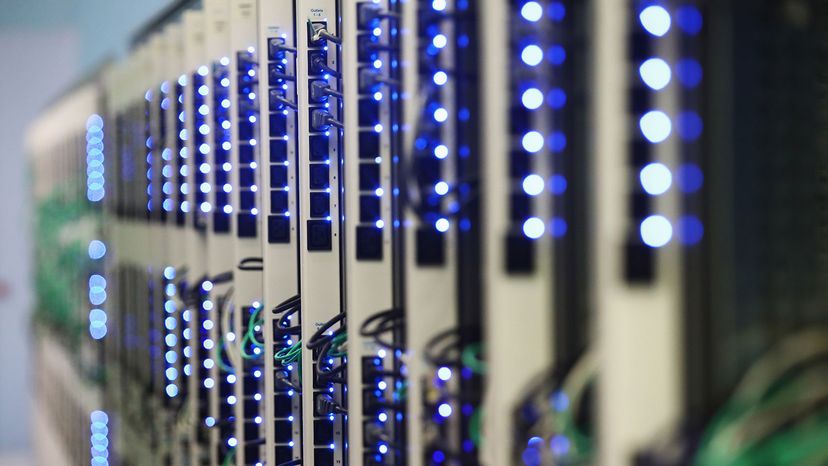
A computer that has been optimized to provide services to other computers over a network, servers usually have powerful processors, lots of memory and large hard drives.
Unlike a desktop or laptop PC, you don't sit down at a server and type. Instead, a server provides computer power — and lots of it — through a local area network (LAN) or over the internet. Companies small and large lean on servers to provide information, process orders, track shipping data, crunch scientific formulas and a whole lot more. Servers are often stored on racks in a dedicated server room, which in some companies may resemble warehouses.
Advertisem*nt
Like regular PCs, servers have typical computer components. They have motherboards, RAM, video cards, power supplies and ample network connections for any need. They don't typically have dedicated displays, though. Instead, IT workers use a single monitor to configure and control multiple servers, combining their computing power for ever greater speed.
Ever wonder how a service like Google can anticipate your search inquiries in real time ... and then kick back answers to your deepest questions in just a moment? It's all because of servers. By some estimates, the company maintains and operates roughly 2.5 million servers in huge data centers scattered all around Earth [source: Data Center Knowledge].
3. Mainframe
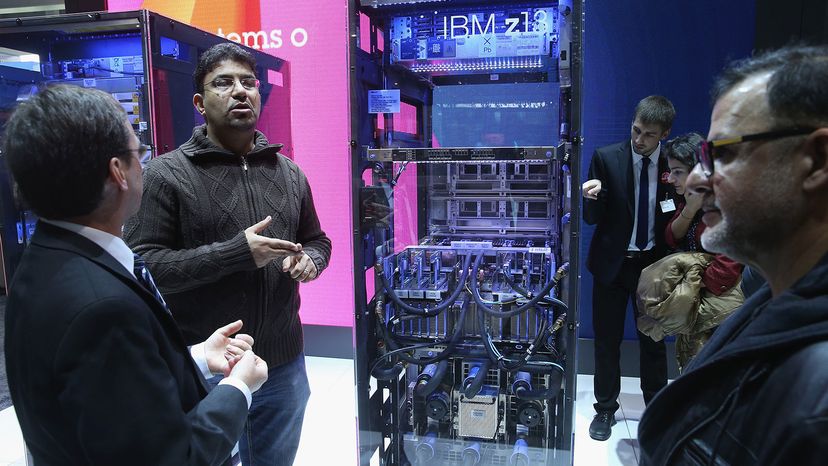
In the early days of computing, mainframes were huge computers that could fill an entire room or even a whole floor! As the size of computers has diminished while their power has increased, the term "mainframe" has fallen out of use in favor of enterprise server. You'll still hear the term mentioned, though, particularly in large companies to describe the huge machines processing millions of transactions every day, while simultaneously working to fulfill the needs of hundreds, if not thousands of individual users.
Although mainframes traditionally meant a centralized computer linked to less powerful devices like workstations, this definition is blurring as smaller machines gain more power and mainframe computers get more flexible [source: IBM].
Advertisem*nt
Mainframes first came to life in the post-World War II era, as the U.S. Department of Defense ramped up its energies to fight the Cold War. Even as servers become more numerous, mainframes are still used to crunch some of the biggest and most complex databases in the world. They help to secure countless sensitive transactions, from mobile payments to top-secret corporation information [source: Alba].
Indeed, IBM, one of the world's most enduring makers of mainframes for more than half a century, saw a spike in mainframe sales in 2018, for the first time in five years. That's in part because mainframes can pack so much calculating muscle into an area that's small than a rack of modern, high-speed servers [source: Hall].
2. Supercomputer
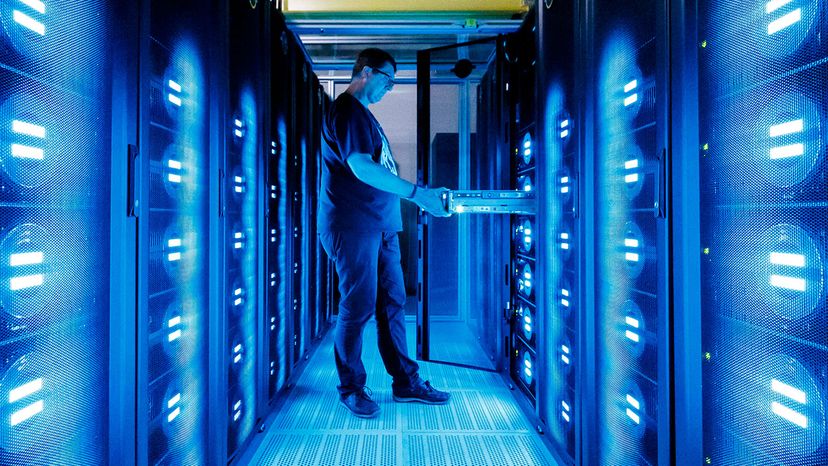
This type of computer usually costs hundreds of thousands or even millions of dollars. Although some supercomputers are single computer systems, most are composed of multiple high performance computers working in parallel as a single system. The best known supercomputers are built by Cray Supercomputers.
Supercomputers are different from mainframes. Both types of computers wield incredible computing power for Earth's most intense industrial and scientific calculations. Mainframes are generally tweaked to provide the ultimate in data reliability.
Advertisem*nt
Supercomputers, on the other hand, are the Formula 1 race cars of the computer world, built for breakneck processing speed, so that companies can hurtle through calculations that might take other systems days, weeks, or even months to complete.
They're often found at places like atomic research centers, spy agencies, scientific institutes or weather forecasting stations, where speed is of vital concern. For example, the United States' National Oceanic and Atmospheric Administration, which has some of the world's most advanced weather forecasting capabilities, uses some of the world's fastest computers — capable of more than 8 quadrillion calculations per second [sources: Hardawar, NOAA].
That kind of heart-stopping computer power comes at an equally heart-stopping price. The U.S. Department of Energy's Oak Ridge National Laboratory's Summit supercomputer, for example, cost $200 million. It is the first supercomputer built to handle AI applications [source: Wolfson].
1. Wearable
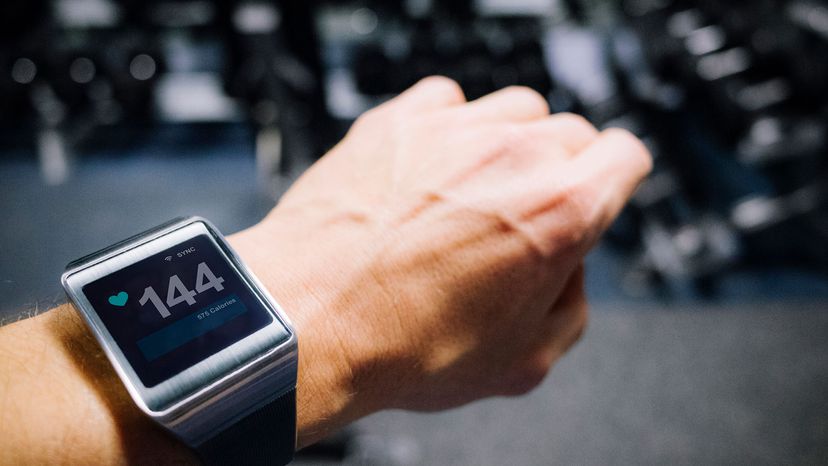
The latest trend in computing is wearable computers. Essentially, common computer applications (e-mail, database, multimedia, calendar/scheduler) are integrated into watches, cell phones, visors and even clothing. Many other wearables target outdoors enthusiasts and fitness fantatics, allowing them to track their location, altitude, calories burned, steps, speed, and much, much more.
The Apple iWatch, now in its eighth incarnation, is one of the best reviewed wearables to date. This small watch has many of the functionalities of a full-blown smartphone. It lets you perform normal texting and email duties. And it has a built-in cell phone, unlike some other smart watches that must be paired with a phone to make calls. It even has a built-in electrical heart sensor that you can use to take an electrocardiogram and share it instantly with your doctor [source: Apple].
But watches are just the beginning. Sewn-in accessories for clothing are growing, as are smart eyeglasses, smart belts, sleep monitors, heart rate trackers and intelligent ear buds. A company called MC10 is even touting skin patches that will track various biological processes happening in your body [source: Pervasive Computing].
Wearables are indeed a new horizon in personal computing. Their flexibility and mind-warping potential speak to the idea that the computer revolution isn't over. If anything, the PC era might just be getting underway.
Types of Computers FAQ
What are the types of computers?
The 10 types of computers include personal computers, desktops, laptops, tablets, hand-held computers, servers, workstations, mainframes, wearable computers and supercomputers.
What is a computer?
A computer is any device that has a microprocessor that processes information. It has hardware, software and a screen for display.
What are the most common types of computers and their functions?
Laptops, hand-held devices, wearable tech and desktops are the most common computer types today. Desktops are the oldest computers and are used to run a large variety of programs and access the Internet. Laptops are portable versions of desktops that are smaller so they can be carried around with ease. Handheld computers (smartphones) and wearable devices offer multiple features such as Bluetooth connectivity, games, audio systems, activity tracking and cameras.
Lots More Information
Related Articles
- 10 Worst Computer Viruses of All Time
- 10 Useful Google Tools
- Top 5 Myths About the Internet
- Top 5 Myths About Google
- Top 5 Ways to Troubleshoot Your Broadband Connection
More Great Links
Sources
- Alba, Davey. "Why on Earth is IBM Still Making Mainframes?" Wired. Jan. 13, 2015. https://www.wired.com/2015/01/z13-mainframe/
- Abell, John. "Jan. 19, 1983: Apple Gets Graphic With Lisa." Wired. Jan. 19, 2010. https://www.wired.com/2010/01/0119apple-unveils-lisa/
- Alfred, Randy. "Aug. 12, 1981: IBM Gets Personal with 5150 PC." Wired. August 12, 2011. https://www.wired.com/2011/08/0812ibm-5150-personal-computer-pc/
- Bellis, Mary. "The History of Laptop Computers." ThoughtCo. April 19, 2018. https://www.thoughtco.com/history-of-laptop-computers-4066247
- Benton, Brian. "Workstation vs. Desktop Computer: Which Does Your Office Need?" Redshift. March 19, 2013. https://www.autodesk.com/redshift/pc-versus-workstation/
- Britannica. "PDA Handheld Computer." https://www.britannica.com/technology/PDA
- Britannica. "Personal Computer." https://www.britannica.com/technology/personal-computer
- Brown, Michael. "How to Choose a Server for Your Small Business." PC World. March 21, 2012. https://www.pcworld.com/article/251993/how_to_choose_a_server_for_your_small_business.html
- CNET. "Best Wearable Tech for 2018." https://www.cnet.com/topics/wearable-tech/best-wearable-tech/
- Comen, Evan. "How Much Did a Personal Computer Cost the Year You Were Born?" USA Today. June 22, 2018. https://www.usatoday.com/story/tech/2018/06/22/cost-of-a-computer-the-year-you-were-born/36156373/
- Computing History. "Osborne 1." http://www.computinghistory.org.uk/det/504/osborne-1/
- Data Center Knowledge. "Google Data Center FAQ." March 16, 2017. https://www.datacenterknowledge.com/archives/2017/03/16/google-data-center-faq
- History.com. "Invention of the PC." https://www.history.com/topics/inventions/invention-of-the-pc
- Hall, Christine. "Why Mainframes Aren't Going Away Any Time Soon." Data Center Knowledge. Feb. 7, 2018. https://www.datacenterknowledge.com/hardware/why-mainframes-arent-going-away-any-time-soon
- IBM. "What is a Mainframe? It's a Style of Computing." https://www.ibm.com/support/knowledgecenter/zosbasics/com.ibm.zos.zmainframe/zconc_whatismainframe.htm
- IEEE Pervasive Computing. "Wearables: The Next Big Thing as Smartphones Mature." Feb. 22, 2018. https://publications.computer.org/pervasive-computing/2018/02/22/wearables-next-big-thing-smartphones/
- Intel. "Workstation or PC: How to Decide What Type of System is Right for You." https://www.intel.com/content/dam/doc/product-brief/workstation-xeon-e3-workstation-or-pc-comparison-brief.pdf
- Krynin, Mark. "What is a Netbook?" LifeWire. March 5, 2018. https://www.lifewire.com/what-is-a-netbook-832315
- Lenovo. "What is a Netbook?" https://www.lenovo.com/us/en/faqs/laptop-faqs/what-is-a-netbook/
- Mitchell, Bradley, "Servers are the Heart of the Internet." LifeWire. July 2, 2018. https://www.lifewire.com/servers-in-computer-networking-817380
- Moore-Colyer, Roland. "Desktop PC Sales Slumped in 2017 as the Death Rattle Sounds Once Again." The Inquirer. March 1, 2018. https://www.theinquirer.net/inquirer/news/3027646/desktop-pc-sales-slumped-in-2017-as-death-rattle-sounds-once-again
- National Oceanic and Atmospheric Administration. "NOAA Kicks Off 2018 with Massive Supercomputer Upgrade." Jan. 10, 2018. http://www.noaa.gov/media-release/noaa-kicks-off-2018-with-massive-supercomputer-upgrade
- Nguyen, Tuan C. "The History of Smartphones." ThoughtCo. Oct. 3, 2017. https://www.thoughtco.com/history-of-smartphones-4096585
- PCWorld. "The 25 Greatest PCs of All Time." Aug. 11, 2006. https://www.pcworld.com/article/126692/greatest_pcs_of_all_time.html?page=6
- TechTarget. "Workstation." https://searchmobilecomputing.techtarget.com/definition/workstation
- TechTarget. "Personal Digital Assistant." https://searchmobilecomputing.techtarget.com/definition/personal-digital-assistant
- Tom's Hardware. "Intel Drops 'Pentium' Brand." Jan. 14, 2006. https://www.tomshardware.com/reviews/intel-drops-pentium-brand,1832-2.html
- Wolfson, Elijah. "The U.S. Surpassed China with a Supercomputer Capable of as Many Calculations per Second as 6.3 Billion Humans." QZ.com. June 9, 2018. https://qz.com/1301510/the-us-has-the-worlds-fastest-supercomputer-again-the-200-petaflop-summit/
- Zimmerman, Kim Ann. "History of Computers: A Brief Timeline." LiveScience. Sept. 6, 2017. https://www.livescience.com/20718-computer-history.html
Cite This!
Please copy/paste the following text to properly cite this HowStuffWorks.com article:
Citation